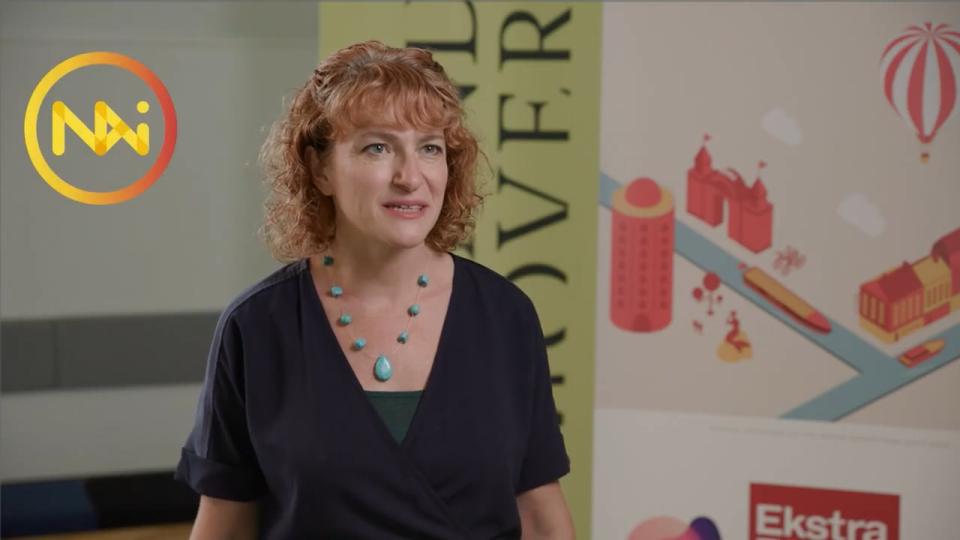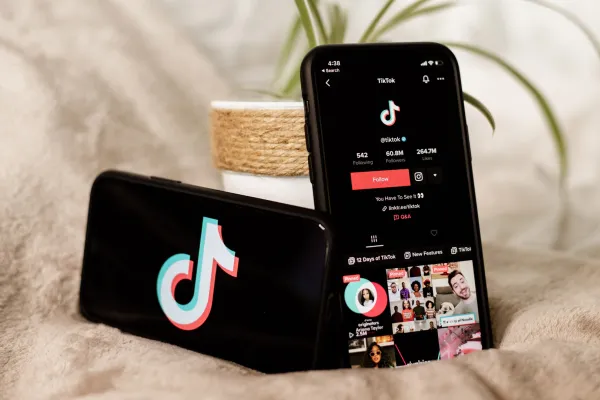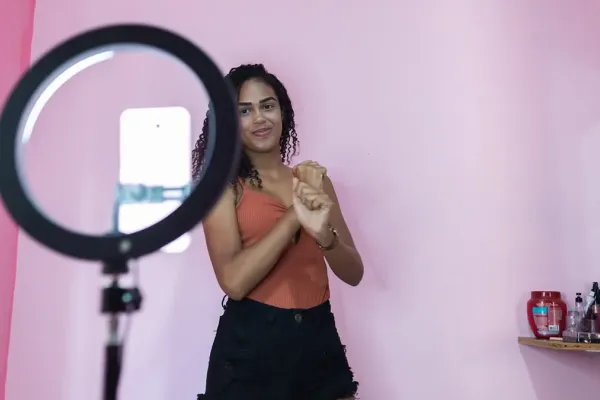
 Details
Details
Global brands are recognizing the importance of TikTok as a key way to engage with young audiences, encourage user-generated content and partner with relevant influencers.
If you’re interested in taking advantage of the world’s fastest-growing social media platform, this post sets out some TikTok native ads best practices and tips.
Your introduction to native ads on TikTok
In this section, we will explore TikTok's unique ecosystem and define a set of best practices tailored specifically for native ads. From creative strategies to audience engagement, we've curated our most essential insights to help you navigate the dynamic world of TikTok and ensure your native advertising efforts stand out and resonate effectively with your target audience.
First things first, which TikTok ad format to use?
To get started with advertising on TikTok, you'll need to understand the different ad formats Tik Tok offers brands. You can read more about these in our explainer article here but in a nutshell, there are TikTok ad formats for all stages of the funnel. Let's take a closer look:
The TikTok TopView ad format is generally aimed at upper-funnel awareness and consideration. Then there’s the In-Feed ad format as a full-funnel solution. And finally, the TikTok Spark Ads can really amplify the reach of their content further with its bespoke native advertising format.
To maximise campaign results on TikTok, the platform recommends combining several of its native advertising solutions. According to the platform's data, when In-Feed and TopView formats are combined, ad recall is 24.1 percent. That’s much higher than when using either format on its own: 9.2 percent for the In-Feed format or 12.8 percent for the Top View format.
Related: The Different Types of Native Advertising
How does Tiktok’s algorithm work?
As the TikTok platform is all about discovery, interaction and creativity, it’s important that brands get potential consumers to interact with their ads. To do this, brands need to understand how the platform's algorithm works.
The TikTok algorithm decides which videos to display to users on their For You Page (FYP) depending on their individual preferences. As a result, the FYP is highly personalised for each individual user, and no two users will see the exact same content. It gets extremely specific by narrowing down the recommendations to niche interests.
The types of videos a user sees will change as their preferences and states of mind change. The TikTok algorithm quickly picks up on behavioural changes to recommend the most appropriate content in the current moment.
There are three factors that influence how the algorithm determines which videos to show users:
- User interactions: The videos users like and share, the accounts they follow, the content they create, comments they make and videos they save in favourites.
- Video information users interact with: Hashtags used, sounds and music to identify trending content and keywords of video captions.
- Device and account settings: Device type, country settings and language preferences.
TikTok is constantly trying to optimise the user experience and excludes some content from showing up on a user's FYP to ensure they don’t keep seeing the same videos or videos they’re not interested in. That means the algorithm will not recommend videos content a user has already watched, spam content, duplicate content and content users mark as “Not Interested”.
Related: What is Native Advertising? Read Our Ultimate Guide
8 Best Practices For Creating Native Ads on TikTok
Knowing how TikTok’s algorithm works, it’s then a matter of knowing how to create TikTok ads that the algorithm will prioritise.
Here are some basic ways that brands can make the TikTok algorithm work for them.
1. Concentrate on a subculture or niche
Brands need to create content in relevant niches because subject matter holds weight in the TikTok algorithm. So they need to focus on a subculture or niche that will allow them to tap into an existing community and boost their content visibility with the right audiences. It means figuring out the types of content that are popular within their industries and niches and using them to inspire their TikTok content.
For example, Australian digital bank Up has partnered with a popular creator who shares personal finance tips to organically join the conversation on financial wellness.
2. Keep videos short
Video ads on TikTok can be up to 60 seconds long, but TikTok recommends keeping them between 21 and 34 seconds and highlighting the key message or product within the first three seconds. So, keep your videos punchy and get straight to the point, without compromising the quality of the content.
3. Engage the audience instantly
Make the first seconds count to ensure your audience will keep watching. Brands can achieve this by using text overlay, visual elements and audio. In this ad, Levi’s has cut out any unnecessary sections and shown the user immediately why they should watch the rest of the video.
4. Use popular hashtags
Popular hashtags can significantly boost brand content. Brands can find trending hashtags under the Discover tab and even participate in hashtag challenges to get seen or discovered. TikTok reports that 61 percent of users like brands that participate in TikTok challenges.
Brands can also try to take this one step further by creating their own hashtag challenge, such as Pepsi’s #pepsicanbalance in which it challenged users to balance a Pepsi can. The campaign was hugely successful, receiving 12.2 million views.
5. Leverage trending audio
Similarly, brands can take advantage of trending sounds. You can find out more about trending sounds and how to find them (there are some restrictions for brands) here.
TikTok has reported that 68 percent of its users remember a brand better when it uses a song they like in its video. Plus, 58 percent feel more strongly connected to the brand while 62 percent are more curious to learn about the brand.
Brands can also create their own sound and try to get it to trend to gain further visibility. Volkswagen made the most of TikTok’s sound-on mentality by working with a notable TikTok creator and pop-duo to produce a fresh new soundtrack using the different sounds of its new electric vehicle.
6. Use relevant and engaging captions
Brands can add captions of up to 300 characters to their native ads. This is a good opportunity for including relevant keywords, although these should be used as naturally as possible. Captions should be funny and relatable, ask questions or prompt users to take some sort of action. This is a great way to get users to engage with the video and leave a comment.
Videos that include captions or texts on the screen with a clear CTA have 55.7 percent more impressions than videos without additional elements.
7. Use the ad specs that work best
TikTok’s ad specs that work best include:
- Full screen and portrait: TikTok videos are vertical, so adapt your content from other platforms to vertical format and use the full screen – an aspect ratio of 9:16 will get a 91 percent increase in conversion compared to videos with empty black space on the sides; videos with square or horizontal aspect ratios get 40 percent fewer impressions.
- High-res vids: Use a high resolution (720P+) for videos – these usually mean an increase in conversions of 312 percent.
8. Stick to Tiktok’s tone
TikTok’s tone is upbeat and TikTok itself recommends that videos stay “positive, authentic and inspiring” – this means no heavy-handed sales pitches, no dark moods or over-produced videos.
A key element to creating successful native ads on TikTok is unique and simple content. This means brands need to show personality or a different side, use organic features, listen to the community and join their conversions.
Storytelling is also important. TikTok videos need to contain a plot, a stylish character and vivid emotion. So brands should use behind-the-scenes shots, break the content into parts, show first impressions and previews. They should also add transitions, cuts or challenges to achieve an organic style.
And the brand’s product should be the star of its content. Making demos, unboxing, using contrast and vibrant colours can all highlight the benefits of a brand’s product.
Creating Spark Ads on TikTok
When creating native ads using the specially designed Spark Ads format, there are some notable differences to the In-Feed ad format.
The requirements for TikTok Spark Ads are:
- Aspect ratio: Any
- Minimum resolution: Any
- Duration: Any
- Max file size: Any
- Ad captions: can be left blank
- Account mentions/tagging, emojis and hashtags are allowed in the captions
- Display name and text come from the original organic post and cannot be edited during the ad creation process on TikTok Ads Manager
There's no limit to how many times you can use the same organic TikTok posts as creatives in your ads.
Spark Ads support TikTok features – including Duet (allowing you to post your video side-by-side with a video from another creator), Stitch (allowing you to combine another video on TikTok with the one you're creating) and Sticker (letting you customise your content, with capabilities beyond overlaying images onto your videos) – and allows viewers to click on the post's music.
Importantly, to use Spark Ads, you’ll need to contact the creators of the content you want to use so they can provide an access code. Get the full Spark Ad instructions from TikTok.
These are just some of the basic tips into creating effective native ads on TikTok. To find out about the importance of audio on TikTok and how to leverage it, be sure to read our article The power of sticky music: Why brands must use sound in their native advertising.



